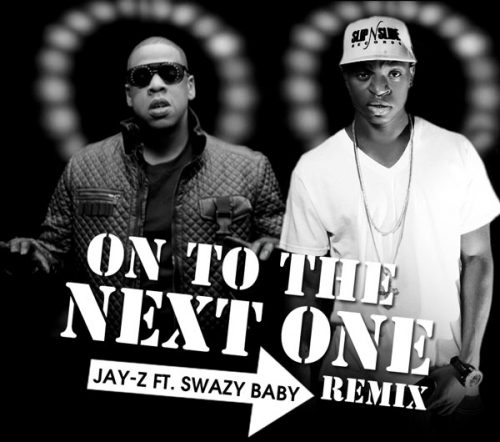
The song has been frequently used for freestyles, notably by Ab-Soul, Bun B, Crooked I and Red Cafe. In addition, Jay-Z is the first artist to have all four singles from one album win six Grammy Awards in their respective category. The song won the Grammy Award for Best Rap Performance by a Duo or Group at the 53rd Grammy Awards, making this, in total Jay-Z's 13th Grammy Award overall, and Swizz Beatz's first Grammy Award win. The song contains a vocal sample of the words "under the spotlight" as well as a background synthesizer sound from the live version of Justice's song " D.A.N.C.E.". The song features additional rap vocals and music production from producer and rapper Swizz Beatz. References to Templar skulls wrapped in gold and silver can be found in some of the early Holy Grail legends." On to the Next One" is a song by American rapper Jay-Z, released as the fourth single from his eleventh studio album The Blueprint 3 on his Roc Nation label, also released as the fourth single in the United Kingdom after "Young Forever". In order to amplify and conduct the power emanating from these skulls for ceremonial purposes they were often wrapped in a highly conductive metal, such as gold or silver, and then placed in energy-productive reliquaries made into the shapes of sacred geometric formations including tetrahedrons, octagons, and pyramids. Other human skulls particularly esteemed by the Templars were those that had been possessed by Christian saints and past grand masters of their organization. The Templars claimed that John’s skull radiated the same kind of Holy Spirit power as it did when attached to the original body of John, and in order to empower their ceremonies and initiations they placed it on their high altars. The skull of John the Baptist discovered by the Templars during the Fourth Crusade in Constantinople was such a skull. Human Skulls were popular among the Templars because they were believed to hold the spiritual power of their original owners – as well as to continually emanate this essence throughout their environment. The one who refers to himself as “HOV” or “Jay-Hova” (a reference to Jehovah, the proper name of God in Abrahamic religions) might be sending the message that he is a god in a LeVeyan satanism kind of way rather than the “black gods” of the Five-Percenters.

Given the dark occult theme of the video and references to Baphomet (used by the Church of Satan), the halo takes on a sinister meaning. The halo is used in iconic imagery to identify holy or sacred figures. The background in the scene above incorporates strategically placed lights with Jay-Z standing right in front of them, making it appear as if he has a halo around his head. Some of them are apparently there for aesthetic purposes (unless I’ve missed something), while others are deeply occult. They often appear for less than a second, I technique I like to call “semi-subliminals”. So this analysis will mainly focus on the occult meaning of some of the images found in the video. The video to On to the Next One does not contain a deep storyline and the lyrics are basically about Jay-Z bragging about how he’s a step ahead. If Jay-Z’s Run This Town left some people wondering if the video truly contained an underlying occult message, On to the Next One confirms Jay-Z’s affiliation with the occult elite. The initiation of the artists guarantees them success and exposure, at the cost of becoming vessels of Illuminati symbolism and personal sacrifice.


How did something go from being accidental to being “too obvious”? It seems those who want to avoid the truth will go to any lengths to rationalize what is happening. Artists at the top level of the music industry are chosen by the elite (the common name for them is Illuminati). After viewing On to the Next One, many of the same people are now saying “he’s doing it on purpose, the symbols are too obvious”. Some people who read my first article on Jay-Z claimed that the symbolism I described was the result of coincidences or that I was “reading too much into it”. As seen in other articles on this site, the same symbols keep reappearing in pop videos, whether we look at Beyonce, Lady Gaga, Rihanna, Jay-Z or whoever else will be “chosen” in the future. Although some of the imagery is solely there for shock value or artistic aestheticism, an important portion of the symbols found in recent videos are directly related to the music industry’s peculiar brand of occultism. I’ve noticed an increasing number of people wondering about the “creepiness” of some of their favorite artist’s music videos. The article goes through some of Jay-Z’s occult influences and his affinities with secret societies. If you haven’t done so already, I strongly suggest you read my first article about Jay-Z ( Jay-Z’s “Run This Town” and the Occult Connections).


 0 kommentar(er)
0 kommentar(er)
